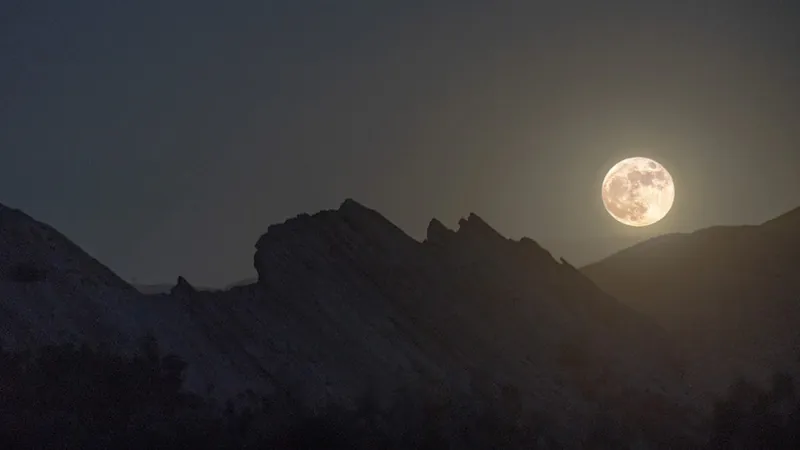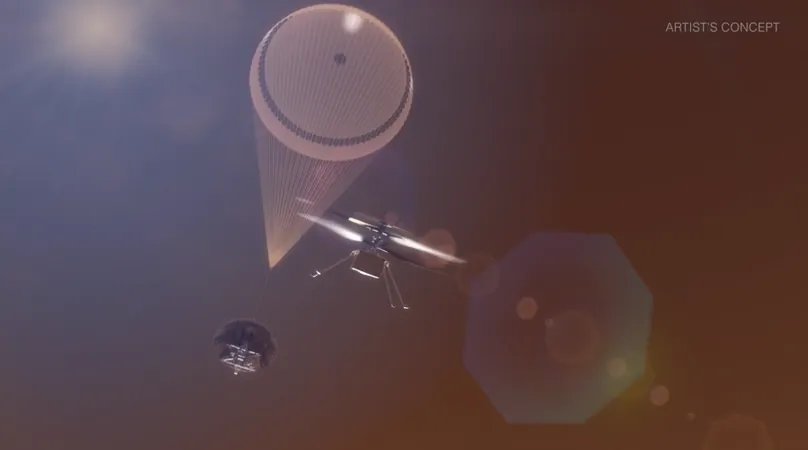
Unlock the Celestial Wonders: Buck Moon Shines Alongside Mars and Venus This Week!
2025-07-09
Author: Siti
The Summer Spectacle Awaits!
Get ready for a dazzling display in the night sky! July's full moon, famously dubbed the Buck Moon or Thunder Moon, will grace us on July 10, reaching its shimmering peak at around 4:37 a.m. local time, just in time for some late-night sky-watching.
A Moonlit Journey Across the Sky
According to the experts at Stellarium, the celestial show begins as the moon rises from the southeastern horizon right after sunset, gracefully traversing the sky before sinking below the southwestern horizon just before dawn. No matter where you are in the US, this grand lunar event ensures you'll catch its brilliance throughout the night!
No Sight? No Problem!
If Mother Nature intervenes with clouds or bad weather, fret not! The Buck Moon will maintain its impressive glow at over 95% fullness from July 9 to July 12, making it easy to catch a glimpse on any of those nights.
What’s Behind the Name?
So, why is it called the Buck Moon? According to The Farmer's Almanac, this lunar phase has several nicknames including Thunder Moon, Feather Moulting Moon, and Salmon Moon. These names trace back to Native American traditions and were historically used to depict the moon's significance for the entire month.
In July, white-tailed deer reach the height of their antler growth, earning this moon its Buck moniker. Furthermore, thunderstorms frequently rumble through during this month, justifying the Thunder Moon title. The Feather Moulting Moon references the time when ducks undergo their annual feather shedding, while the Salmon Moon corresponds with the migration of salmon for their mating season.
Spotting the Cosmic Companions: Mars and Venus!
But that’s not all! As the Buck Moon glides across the heavens on July 10, it will be accompanied by the brilliant lights of Mars and Venus. Look to the western sky right after sunset to catch a glimpse of Mars before it slips below the horizon before midnight.
For those willing to brave the night, Venus will make its appearance on the eastern horizon shortly after 2 a.m., shining bright right until dawn. Not to be outdone, Saturn will also be visible nearby, but you may need binoculars or a telescope to fully appreciate this distant gem amidst the moon's glow.
Prepare for Celestial Marvel!
Clear your calendar for this mesmerizing opportunity to connect with the cosmos! Whether you're a seasoned stargazer or a curious newcomer, the Buck Moon, Mars, and Venus promise a night to remember.






 Brasil (PT)
Brasil (PT)
 Canada (EN)
Canada (EN)
 Chile (ES)
Chile (ES)
 Česko (CS)
Česko (CS)
 대한민국 (KO)
대한민국 (KO)
 España (ES)
España (ES)
 France (FR)
France (FR)
 Hong Kong (EN)
Hong Kong (EN)
 Italia (IT)
Italia (IT)
 日本 (JA)
日本 (JA)
 Magyarország (HU)
Magyarország (HU)
 Norge (NO)
Norge (NO)
 Polska (PL)
Polska (PL)
 Schweiz (DE)
Schweiz (DE)
 Singapore (EN)
Singapore (EN)
 Sverige (SV)
Sverige (SV)
 Suomi (FI)
Suomi (FI)
 Türkiye (TR)
Türkiye (TR)
 الإمارات العربية المتحدة (AR)
الإمارات العربية المتحدة (AR)